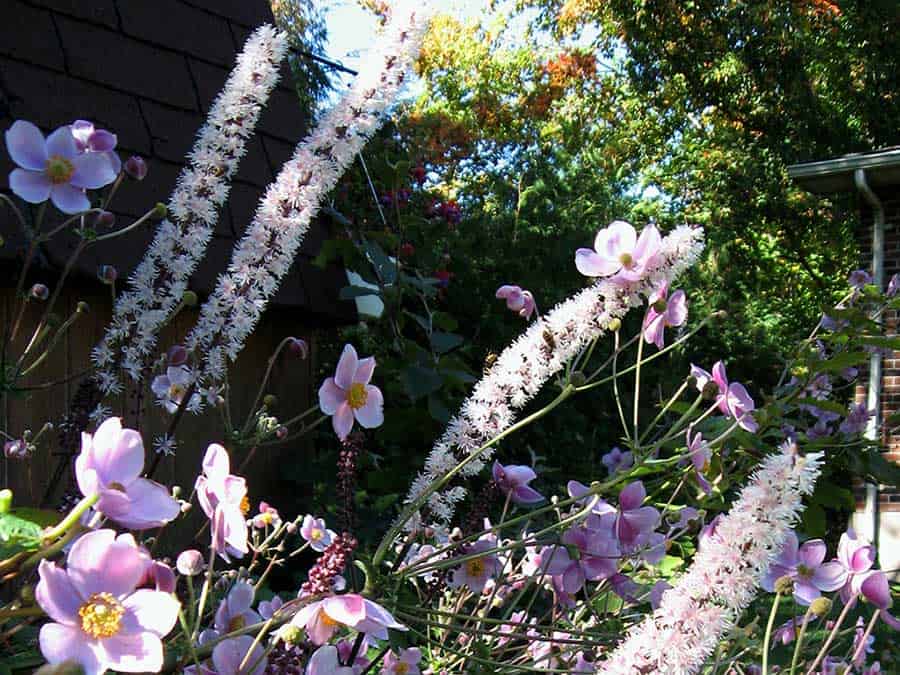In late summer, I start to empty any containers with annuals beyond resuscitation, note where spring-blooming bulbs can be squeezed in and make lists of perennials to seek out next year. This looking forward helps me look past the crisp lawn and fading roses that just make me sad.
As our garden trees mature, the increasing shade they cast means several sun-loving perennials have faltered, so I’m always on the hunt for interesting shade-tolerant perennials to fill the gaps. If they’re also tall and bloom late, so much the better. That’s why I’ll definitely be looking for cimicifugas (Actaea simplex cultivars) next spring. A cultivar with deep burgundy foliage, such as ‘Hillside Black Beauty’, would provide a pleasing contrast to several existing drifts of gold Japanese forest grass (Hakonechloa macra ‘All Gold’). Stephen Westcott-Gratton suggests other worthy cultivars in “Cimicifugas: Superstars of the autumn garden.”

Future foxgloves
One of this year’s seed-starting successes were yellow foxgloves (Digitalis lutea) started under lights in late February and planted out in garden beds in May. The biennial plants have bulked up over summer and I’m looking forward to graceful wands of small yellow flowers next spring. To keep them going, I’ll sow a few more indoors next winter to maintain a stand of these from year to year.
I also started rusty foxglove (Digitalis ferruginea) seed — twice — with absolutely zero success, however I received two young plants last spring from a friend who had better luck with her seed. So far, so good with these, too. “An uncommon foxglove” by Judith Adam describes more of this foxglove’s charms.
Garden news and views
•. EcoWatch reports on the results from a study done at California ornamental plant nurseries by University of California entomologists in “Neonicotinoids harm bees at far below the label recommended dose.”
•. A recent post from Laidback Gardener in Quebec highlights an article from the Soil Science Society of America about how “living fertilizers” (arbuscular mycorrhizal fungi) benefit plants.
•. “Top five common tree diseases and how to treat them” from LEAF includes advice and photos to help you identify suspected problems you might see on your trees at this time of year. LEAF (Local Enhancement & Appreciation of Forests) offers a subsidized backyard tree planting program for private property in the Greater Toronto Area and other municipalities in Southern Ontario.
